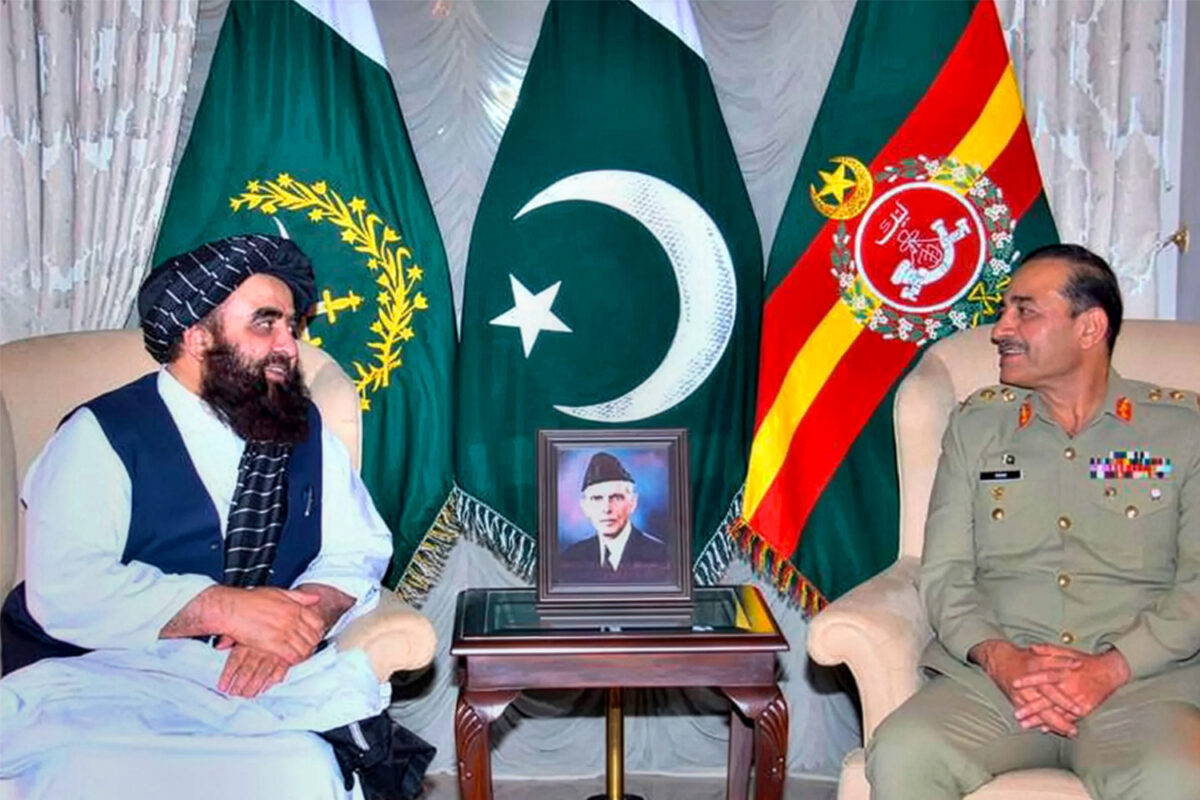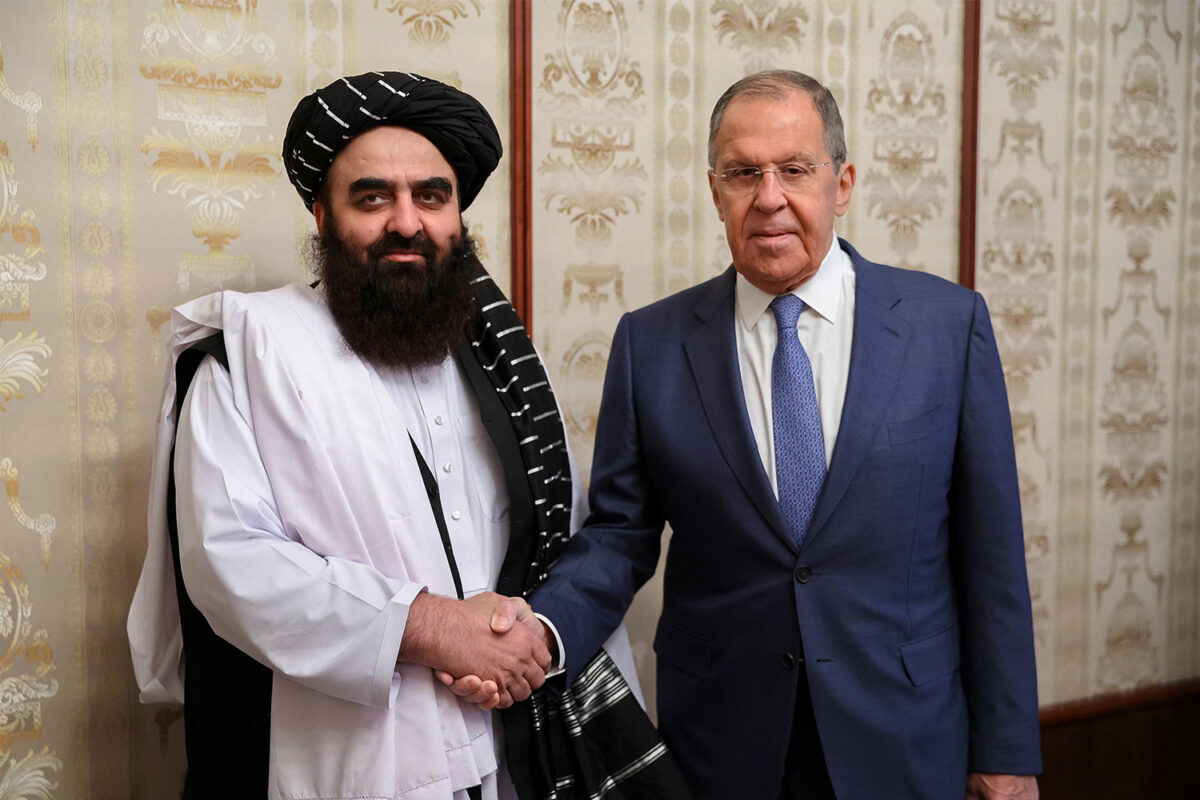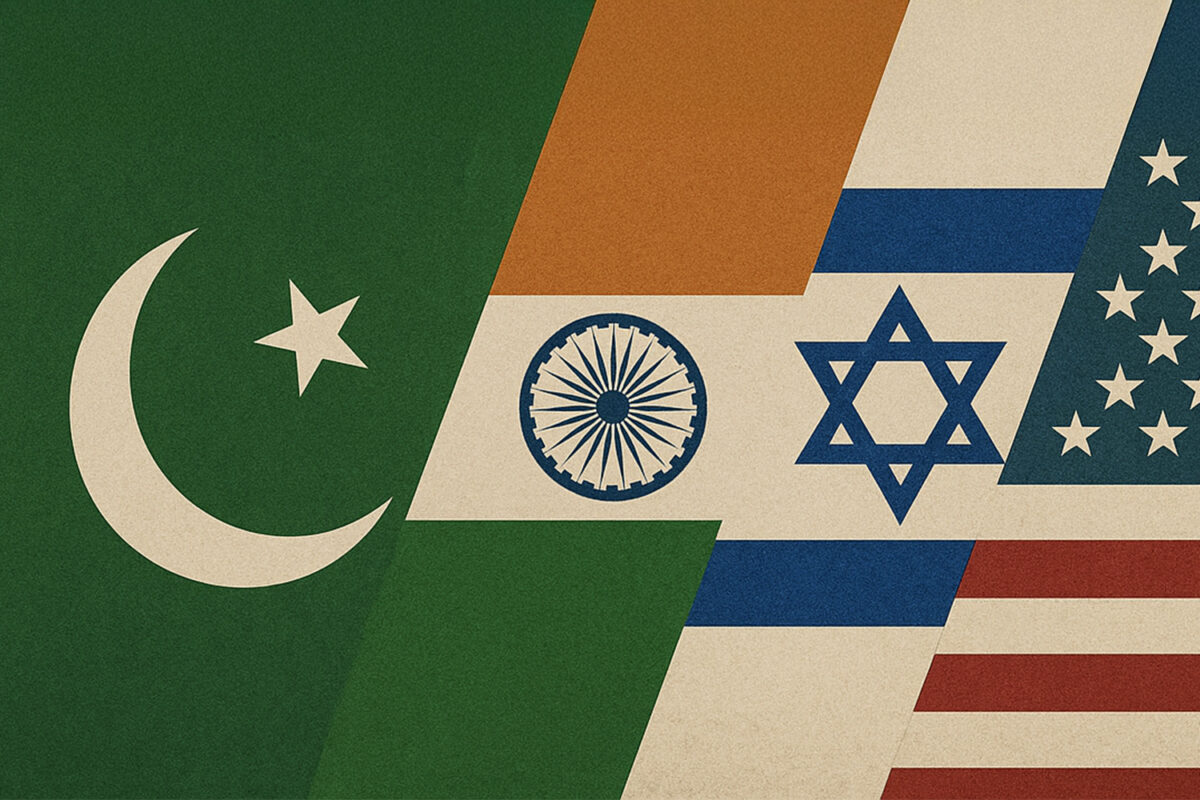When Lt Gen Faiz Hameed, head of Pakistan’s formidable ISI strode into Kabul airport in 2021 and confidently stated at the departure of US troops “… don’t worry everything will be okay,”[1] it was assumed that relations between Pakistan and Afghanistan would be close and co-operative. Pakistan and in fact every other nation considered the Taliban as Pakistan’s proxy and decades after its ouster it was unexpectedly back in charge in Kabul. The Taliban had effectively neutralised all opposition including in Panjshir Valley the former stronghold of the Northern Alliance which it was unable to take in its former incarnation.[2] The message was clear and emphatically directed towards Pakistan’s neighbour India, effectively sealing Pakistan’s victory over India in the Afghan theatre.
However, four years after Afghanistan’s liberation, relations between the Taliban and Pakistan have cooled considerably. Pakistan recently launched what it deemed retaliatory strikes into Afghanistan after a group of six suicide bombers using a truck bomb attacked a Pakistani army check point killing seven soldiers.
Although not officially part of the Afghan Taliban, the Tahreeq-i-Taliban (TTP) share many of its theological and political aspirations. Whereas Taliban are exclusively concerned with territories west of the Durand line the focus of TTP’s activities are the areas within Pakistan that constituted the federally administered tribal areas (FATA) formerly a quasi-independent area nominally administered by Pakistan’s federal government. This area bore the brunt of US and the Pakistani army’s excesses during the War on Terror and the subsequent occupation of Afghanistan. In addition to daily drone strikes, large parts of north and south Waziristan were laid to waste by Pakistan’s army in support of the US occupation of Afghanistan. It will suffice to say that these actions have left considerable animosity towards the Pakistani state in these areas.[3]
Although not officially part of the Afghan Taliban, the Tahreeq-i-Taliban (TTP) share many of its theological and political aspirations.
Though Islamabad alleges that the TTP is primarily of Afghan origin, this is incorrect. Even those elements that reside and operate from Afghanistan are in fact refugees originating from the FATA area who sought refuge in Afghanistan during the Pakistan’s participation in the war on terror.[4]
Unlike the Afghan Taliban where a single chain of command exists, the TTP is a confederation of often conflicting groups ranging from the Deobandi to the Salafi, continually conflicting and united only in their hostility towards the Pakistani state.[5] The interests of the Afghan Taliban and the TTP also diverge. Whilst the Afghan Taliban enjoyed significant patronage from the Pakistani state, the TTP has as its main adversary the Pakistani state and relations between the Afghan Taliban and the TTP can become strained.
The 18th of March attack conducted by the Pakistan’s air force (PAF) against targets in Afghanistan is the second attack conducted by Pakistan since the Taliban returned to power. The first attack on the 17th of April targeted the Khost province and tragically resulted in the death of 47 people, 40 of whom were civilians mainly women and children.[6] In a similar manner Pakistan’s recent attack also resulted in significant civilian casualties with reports indicating that four women and three children were killed. To add insult to injury, the intended target Abdullah Shah, a high level commander from the Hafiz Gul Bahadur faction of the TTP, subsequently released a video showing his presence in Pakistan’s tribal areas. The Taliban responded with mortar fire against Pakistani army positions across the border. Pakistan’s foreign office released a statement following the attacks stating that over the years, “…Pakistan has repeatedly conveyed its serious concerns to the interim Afghan government over the presence of terror outfits, including TTP, inside Afghanistan. These terrorists pose a grave threat to Pakistan’s security and have consistently used Afghan territory to launch terror attacks inside Pakistani territory.”
In response the Taliban’s spokesman Zabiullah Mujahid stated “…around 3am, Pakistani aircraft bombarded civilian homes in Khost and Paktika provinces, claiming that all eight people killed were women and children.” He further went on to stress in a post on his X account that “The Pakistani side is saying that [militant] Abdullah Shah was targeted in the strikes but he lives on the Pakistani side. Members of the same tribe live on both sides and routinely move across the border.” Mujahid went even further stating “Pakistan should not blame Afghanistan for their problems and failure to control violent incidents. Such acts can lead to dire consequences which will not be in control of Pakistan.”
Mujahid’s statement struck a nerve in Pakistan and drew immediate condemnation from a variety of sources. The ISPR (Inter Services Public Relations) in a statement asserted that “The Afghan interim government is not only arming the terrorists but also providing a safe haven for other terrorist organisations as well as being involved in the incidents of terrorism in Pakistan,” It further stated that “…with the help of the Afghan Taliban and the supply of modern weapons, there has been an increase in the incidents of terrorism in Pakistan.”
It seems fairly ingenuous of the Pakistani side to implicate the Taliban in its problems definitively of its own making. It is the decades of Pakistan’s involvement in the US war on terror and the numerous military operations and its clandestine murders that has so incensed the tribes and increased support for a plethora of groups fighting its rule in the tribal areas. Pakistan’s rentier generals, whilst earning billions from logistical arrangements with the US and using Pakistan’s army as private security service, sustained the US occupation of Afghanistan and the tribal areas. In an open secret the drones wreaking havoc in Waziristan flew from Jacobabad air base.[7]
It seems fairly ingenuous of the Pakistani side to implicate the Taliban in its problems definitively of its own making
The latest incidents come in the context of a sustained deterioration in relations between the Taliban and Pakistan. The Taliban rightly feel that Pakistan’s intentions are less than sincere towards it; whilst extending the hand of friendship in connivance with the US, Pakistan seeks to isolate and arrest its development. From banning the import of Afghan agricultural products,[8] to the construction of a 2800 km fence along the Durand line,[9] Pakistan is attempting to reduce cross border contact and trade. In addition, Pakistan’s decision to expel 1.7 million refugees, most of whom had been residing in Pakistan for decades, further exacerbated tensions [10]
It seems that Pakistan is engaged in a deliberate policy of escalating tensions with Afghanistan. There are a number of reasons that one may assume are driving Pakistan’s policy vis a vis Afghanistan. As its utility to the US has waned and large sums of money are no longer on offer for services rendered, Pakistan’s military has adopted a more servile attitude to US policy demands. What used to be a patron-client relationship has become one of a vassal state. It is well understood in political circles that as a bulwark to Chinese expansionism, US desires Indian hegemony over south east Asia and souring of relations between Pakistan and Afghanistan erase hard won victories against India, which through trade diplomacy and proxy wars seeks to increase its influence in Afghanistan.
In addition, there are domestic considerations that influence the Pakistani establishment’s policy regarding the Taliban. In comparison to the utter mess that seven decades of military mismanagement have achieved in Pakistan, the four years rule shows that despite the disadvantages that the Taliban have to contend with, Afghanistan is considerably better managed than Pakistan. To the secular elite of Pakistan, Islamic Afghanistan’s revival is a challenge it cannot meet, so disengagement is preferable.
[1] ‘Don’t worry, everything will be okay’: ISI chief during Kabul visit – DAWN.COM
[2] Afghanistan: The ‘undefeated’ Panjshir Valley – an hour from Kabul – BBC News
[3] https://www.bbc.co.uk/news/world-asia-48139648
[4] https://en.wikipedia.org/wiki/Insurgency_in_Khyber_Pakhtunkhwa#Insurgency_in_the_north,_2007
[5] Insurgency in Khyber Pakhtunkhwa – Wikipedia
[6] At least 47 dead in Afghanistan after Pakistan attacks: Officials | Military News | Al Jazeera
[7] A Secret Hub for the U.S. in Afghan War – Los Angeles Times (latimes.com)
[8] Pakistan Imposes New Restrictions on Afghan Commodities | TOLOnews
[9] Pakistan Fences Off Afghanistan, Impacting Families And Fighters (rferl.org)
[10] Pakistan: Widespread Abuses Force Afghans to Leave | Human Rights Watch (hrw.org)




